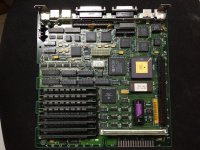quorten
Well-known member
Welcome @Hiro256!
Psst! Fine, I digress, if you're looking for a single FPGA design, Steve Chamberlin had done that 9 years ago and dubbed it the Plus Two. To my knowledge no one has ever been interested in picking that project up to polish it off, probably because the license/copyright terms on Steve's code portion of it were never clearly stated.
https://www.bigmessowires.com/plus-too/
EDIT: Latest update is in 2015, at least one contributor picked up on the project. License/copyright info also appears ambiguous on that project.
https://www.bigmessowires.com/2015/10/22/plus-too-mac-replica-new-progress/
You can find most of the parts on the list actually, but probably better to put everything into one FPGA.
Psst! Fine, I digress, if you're looking for a single FPGA design, Steve Chamberlin had done that 9 years ago and dubbed it the Plus Two. To my knowledge no one has ever been interested in picking that project up to polish it off, probably because the license/copyright terms on Steve's code portion of it were never clearly stated.
https://www.bigmessowires.com/plus-too/
EDIT: Latest update is in 2015, at least one contributor picked up on the project. License/copyright info also appears ambiguous on that project.
https://www.bigmessowires.com/2015/10/22/plus-too-mac-replica-new-progress/
Last edited by a moderator:


